Under the sign of a dead head
As we know, from 110 German cavalry regiments on 1914 year - 21 was hussars (Armed forces of foreign countries. B. 2. Land forces of Germany. M., 1914. C. 10-11 .; Major changes in the German army by February 1 1914. SPb., 1914., S. 11.). Not all subjects of the German Empire had hussar regiments - and the latter were exhibited only by Prussia, Brunswick and Saxony.
Today we will take a look at the hussar regiments, which had in their emblems a dead (Adam's) head and bones - and there were three such regiments, called the “Hussars of Death”: 1 and 2 (Leib-Hussar brigade) and 17 th hussars The first two were Prussian, and the third - Brunswick.
We will immediately note the peculiarities of the hussar uniform - with an emphasis on the three shelves of interest to us. Hussars were distinguished: a hat with a color cap, a Hungarian (Attila) of various colors with cords, dark blue trousers (except Saxon hussars), some shelves had mentics (including 1 and 2 of the Life Hussars), on hats The Life Hussar Regiments No. 1 and 2 and the Brunswick No. 17 are dead heads. The distinctive colors of the regiments are: instrument panel caps — crimson for the Lab Hussars No. 1, white for the Lab Hussars No. 2, crimson for the Brunswick Hussars No. 17; Hungarian cloth color - black for all three regiments; Hungarian cord color is white for both regiments of the life hussars and yellow for the Brunswick hussars No. 17.
Had features and uniform of wartime.
So, the caps of the three regiments of interest were: round rim - black in the 2-m of the Leib-Hussars and crimson for the other two; the rim on the tail and the bottom on the rim - white for the Leib Hussars and yellow for the Brunswick Regiment No. 17; the upper rim of the rim is white and crimson (two edgings) for a hussar № 1, white for a hussar № 2 and yellow and a crimson for Brunswick hussars No. 17. The all-German cockade was fastened on the crown, and the land cockade was on the okolysh under the German one (colors: Prussia - black - white - black; Braunschweig - blue - yellow - blue). The uniform (attila) remained the same, but acquired the color of a feldgrau (cords and gombs became gray (in officers — with the addition of a black thread), but the shoulder cords — in the color of a dolman and instrument colors; regimental numbers or ciphers on cords — galunny, but the shoulders peacetime belts, scarves and textiles were not worn), as well as field leggings.
We would like to note such an interesting fact that if the Russian regular cavalry actually had a single version of the marching uniform (differing in details), including hussars, the German hussars retained their characteristic uniform even in the field version - even though attila became protective in color, on the hussar cap was put on the cover.
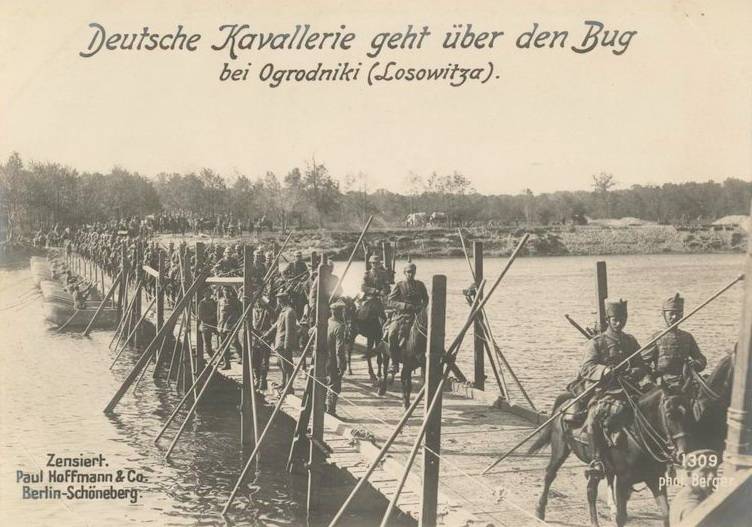
Maneuvering war on the Russian front. German cavalry shipped across the river. Bug, summer 1915 g. Ahead - hussar crossing.
1 th Life Guards Regiment (hussar number 1) in 1914, he was a member of the Life Hussar Brigade of the 36 Division of the 17 Army Corps (Danzig). And it was not by chance - after all, the 17 Army Corps (by the way - one of the future victims of the Gumbinnen battle) was considered one of the best (if not the best) in the Kaiser army, and its commander was General of the Cavalry Adjutant General A. von Mackensen, the old “hussar of death” (in 1869, he began his service in the 2 th Leibus Hussars, and in 1893 — 1898 he was the commander of the 1s Leib Hussars).
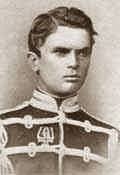
A. von Mackensen - 18-year-old lieutenant in the form of 2-th Life-Hussars.
Almost 30 years later. "Father-commander" 1 th Life-Hussars A. von Mackensen in the regimental uniform.
The seniority of the regiment is 9 August 1741, when the 5 th Hussars (Black Hussars) were established. The regiment went through a series of reorganizations and renames, and in 1808, "gave life" to the 2 th Life Guards Regiment - the latter appears after the separation of the 1 Regiment (and the commander of the 1 th Life Leaders Husar General Pritwitz was temporarily the commander of both of them ( !) regiments).
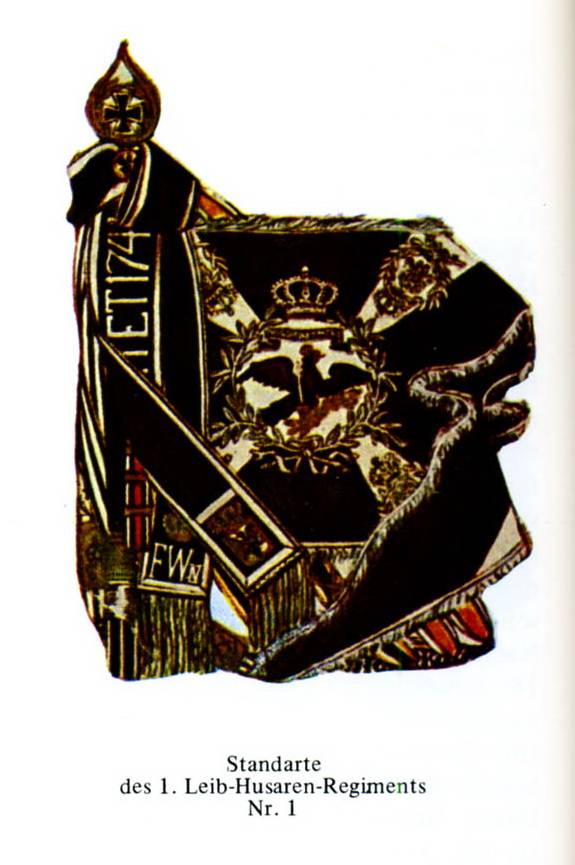
Standard 1 th Life-Hussars.
The 7 in May, the 1861 regiment was given the name of the 1 th Life Guards Regiment, no. 1, and in 1894, Wilhelm II converts both of the Life Hussars into the Leib Husar Brigade with a place of deployment in Danzig.
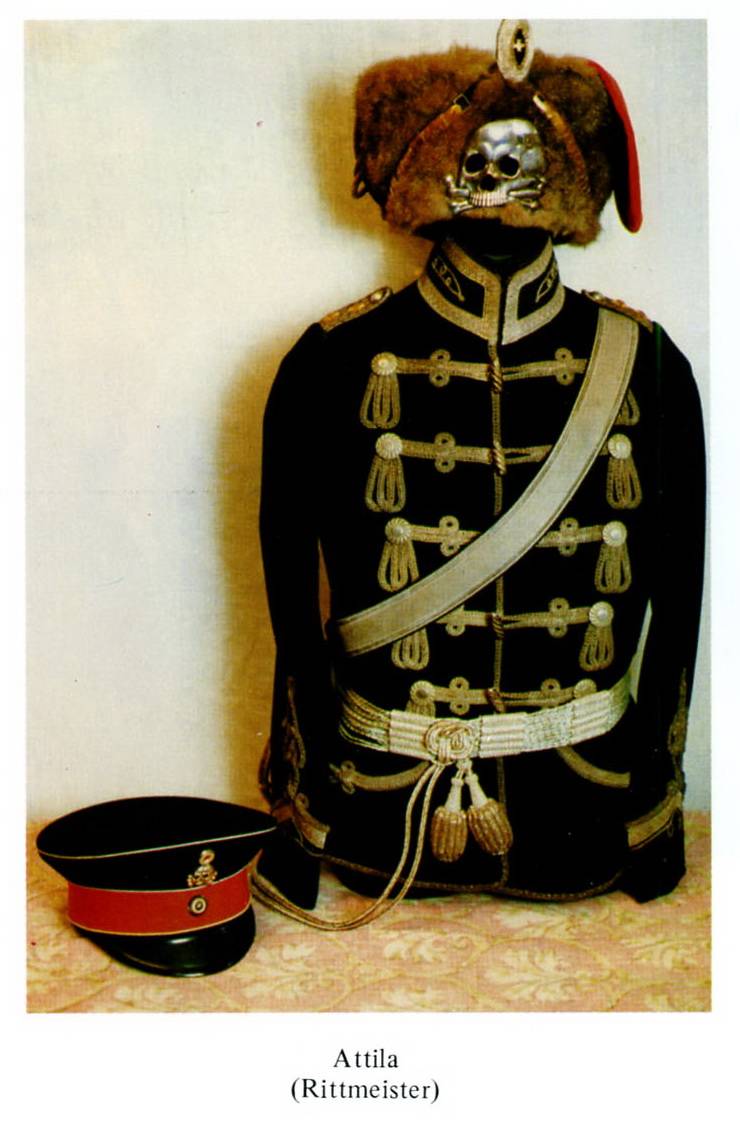
Attila, hat and cap of the captain.
The regiment participated in the Second Silesian War, the Seven Years War, the War of Bavarian Succession, the Napoleonic Wars, was active in suppressing the Polish insurrections in 1830, 1848 and 1863-64, the Austro-Prussian (in particular, participated in the Battle of Königgrz) and Franco -prussian wars.
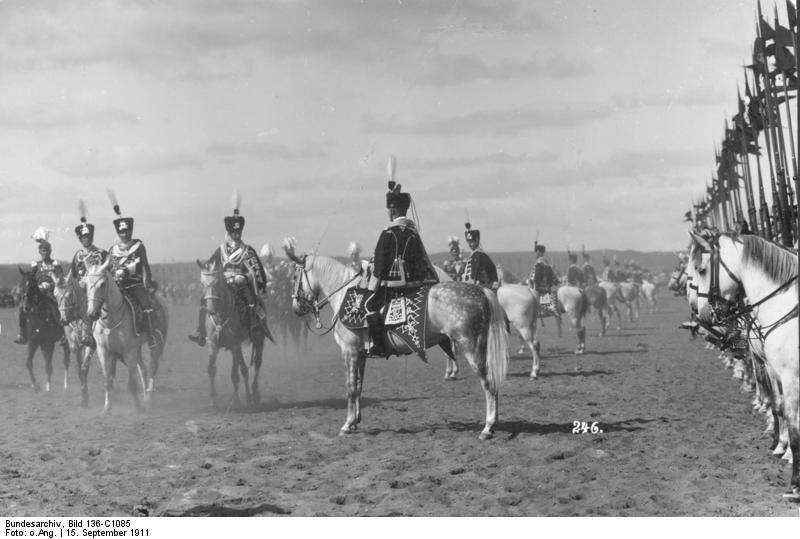
Kronprinz Wilhelm at the review of the regiment. 1911
At the beginning of World War I, the Life Hussar Brigade, which included the regiment, was on the Western Front - participating in the Battle of Marne and in the battle of Arras. But in the autumn 1914 was transferred to the Russian front. The hussar brigade operated in Galicia and the Baltic states (as part of the Shmettovo corps in the spring - in the summer of 1915). In particular, crossed weapon with the Ussuri horse brigade at Popelyan in early June 1915, and failed. The journal of hostilities of the Primorsky Dragoon Regiment noted the fact that there were fifty prisoners and hussars from the two Leib Hussar regiments among the captured fifty.
The brigade remained in the Baltic States - later participating in the Riga operation and the “Albion” operation. And then - participation in hostilities in Finland. After the conclusion of the Brest-Litovsk peace treaty, she served in the occupied territories, and in the spring of 1919, after returning to her homeland, she was demobilized.
Kronprits Prussky Wilhelm - in 1911, in the rank of major, becomes commander of the 1-th Life Guards Regiment. He commanded over two years.
2 th Life Queen Hussar Regiment of Queen Victoria of Prussia (hussar number 2) He was also a member of the Life Hussars Brigade and had the same seniority - 9 August 1741.
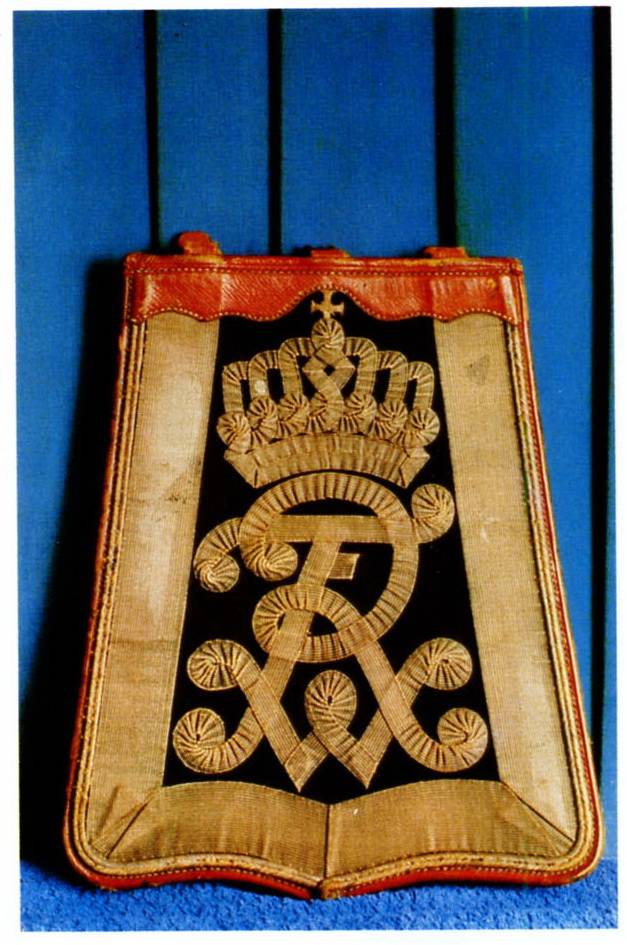
Tashka officer regiment.
As we noted above, the regiment appeared after the division of 1 of the Leib-Hussars in 1808.
September 1 The 1901 regiment gets its last name.
The regiment is a participant in hostilities in the campaigns of 1813-1814, the Austro-Prussian and Franco-Prussian wars, the suppression of the Polish insurrections.
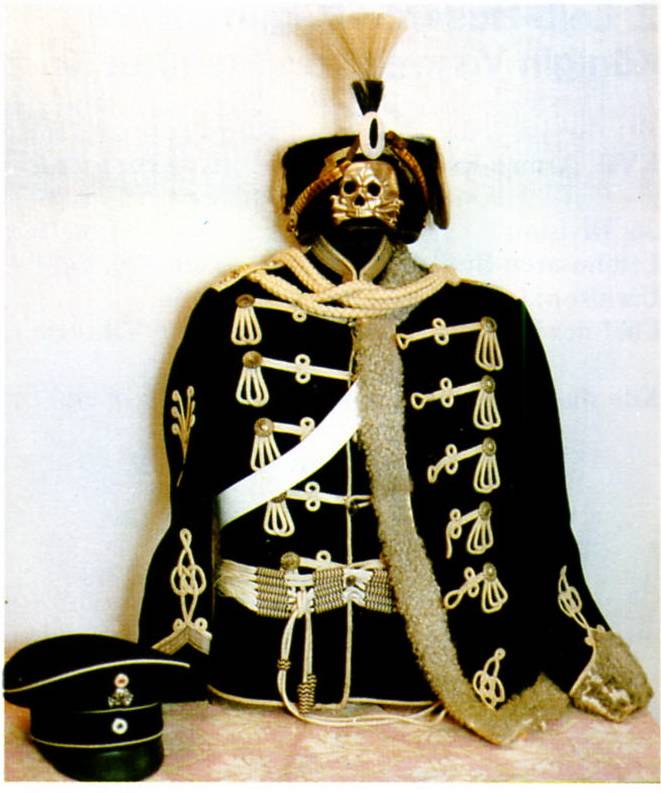
Ceremonial noncommissioned officers attila with a mantle, hat, and also a peaked cap
The combat path of the Life Hussar Brigade during the First World War was described above in general terms.
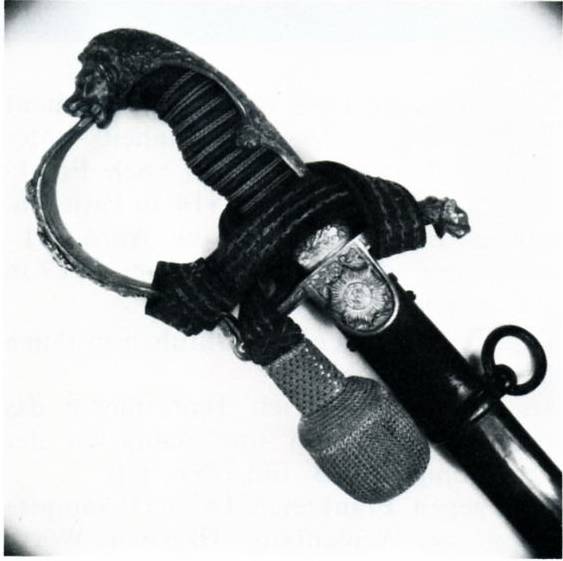
Chef of the regiment Victoria Louise of Prussia.
Braunschweig Hussar Regiment № 17 on 1914, the year was part of the 20 Cavalry Brigade of the 20 Cavalry Division of the 10 Army Corps. Yes, yes, that same Hanover-Braunschweig corps, which will be the "fire brigade" of the Kaiser army and one of the elite front-line units of the First World War.
Seniority of the regiment - 1 April 1809
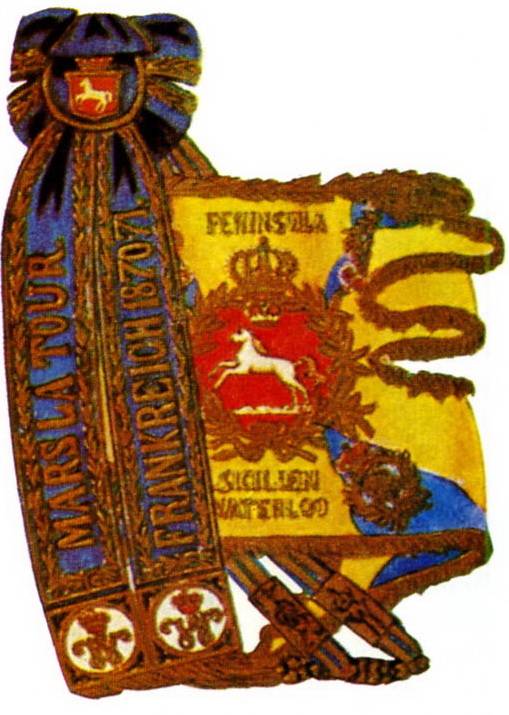
Standard 17 th hussars.
The regiment participated in the Napoleonic wars (1809 campaign, fought in Spain against the French in 1813-14 — on the British side, and then served in the British service for a while), including the struggle with Bonaparte during the “One Hundred Days” period 1815 (a participant in the Battle of Waterloo), a campaign against Denmark in 1849, as well as the Austro-Prussian and Franco-Prussian wars.
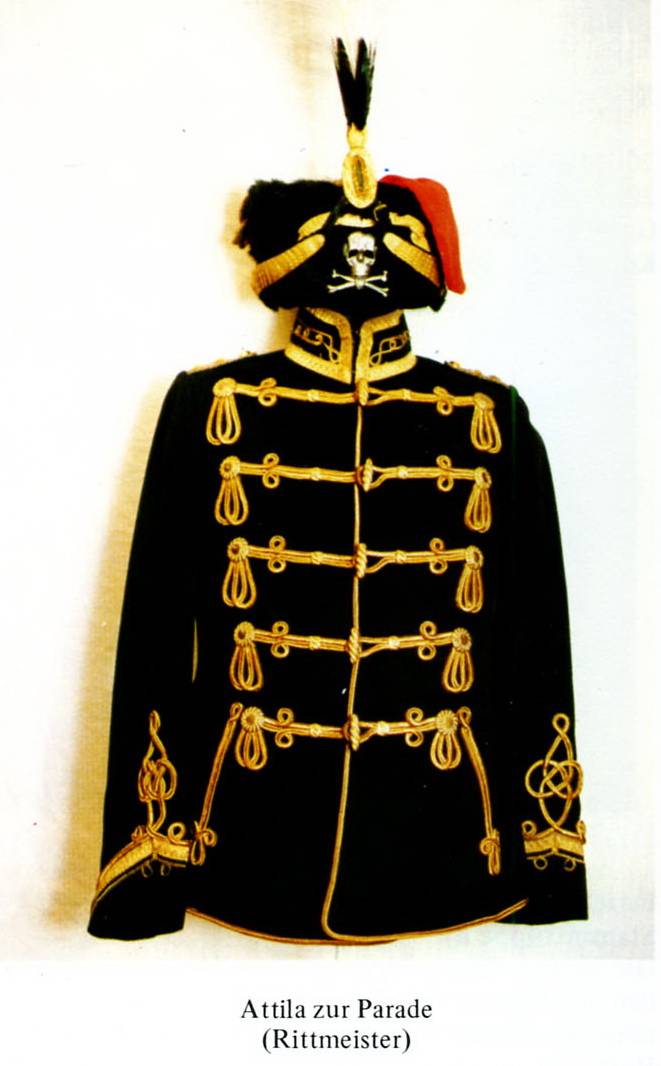
Parade attila of the captain
During World War I, the regiment was divided into 2 battalions, which were assigned to 20 and 19 infantry divisions as military cavalry. The regiment squadrons served as military cavalry until the spring of 1915, when the squadrons were reconnected again, and in April the regiment was transferred to the Eastern Front. Together with the 10 Army Corps, the regiment operated in Poland and Galicia - until in September it was again deployed to the west, sowing in trenches. But in May 1916 was again transferred to the Eastern Front - to help the Austrian front, bursting under the blows of the Russian armies. And it operates under the Covel - reflecting the attacks of the Russians. This became the "swan song" of the regiment - which then actually ceased to be a single part. Squadrons as a military cavalry "dissolved" between the infantry units - to meet in Brunswick at the end of November 1918 g. But on this story Brunswick Hussars are not over. They fell into the thick of the civil war - and December 5 1918 engaged in fierce clashes. And on January 30, a squadron of volunteer hussars took part in suppressing riots in Bremen, Emden and Wilhelmshaven. Later, the hussars of this squadron became part of the 1919 Cavalry Regiment of the army of the Weimar Republic.
To be continued ...
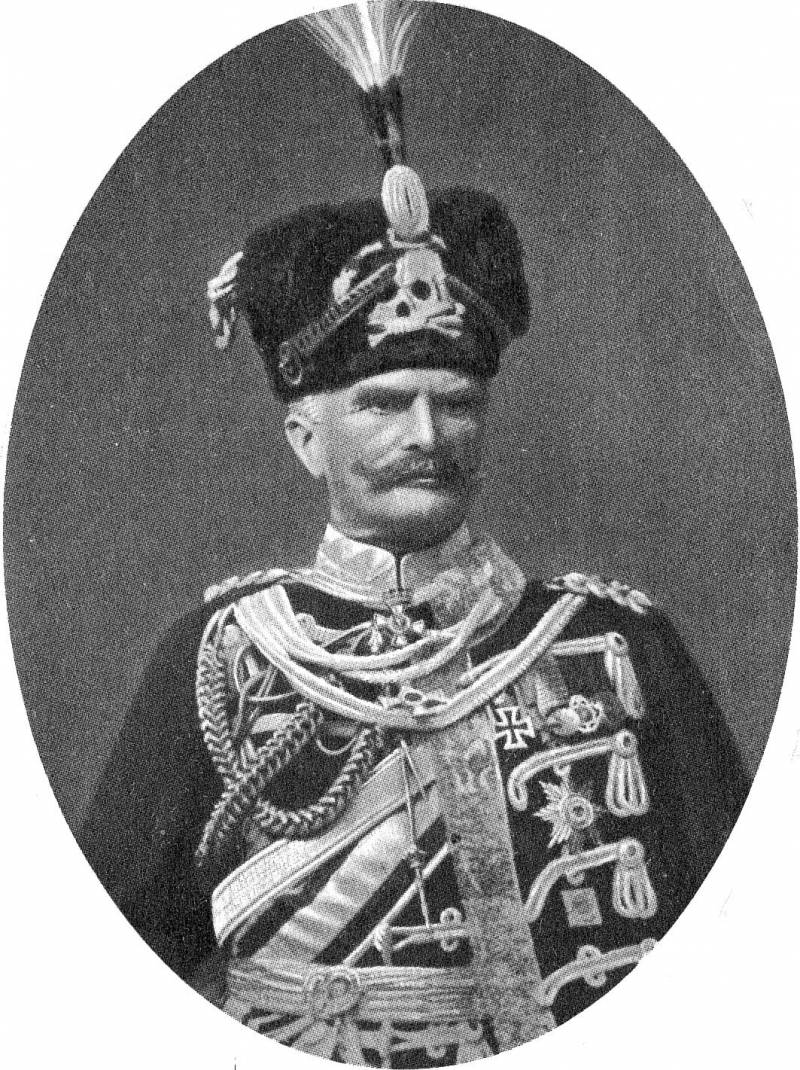
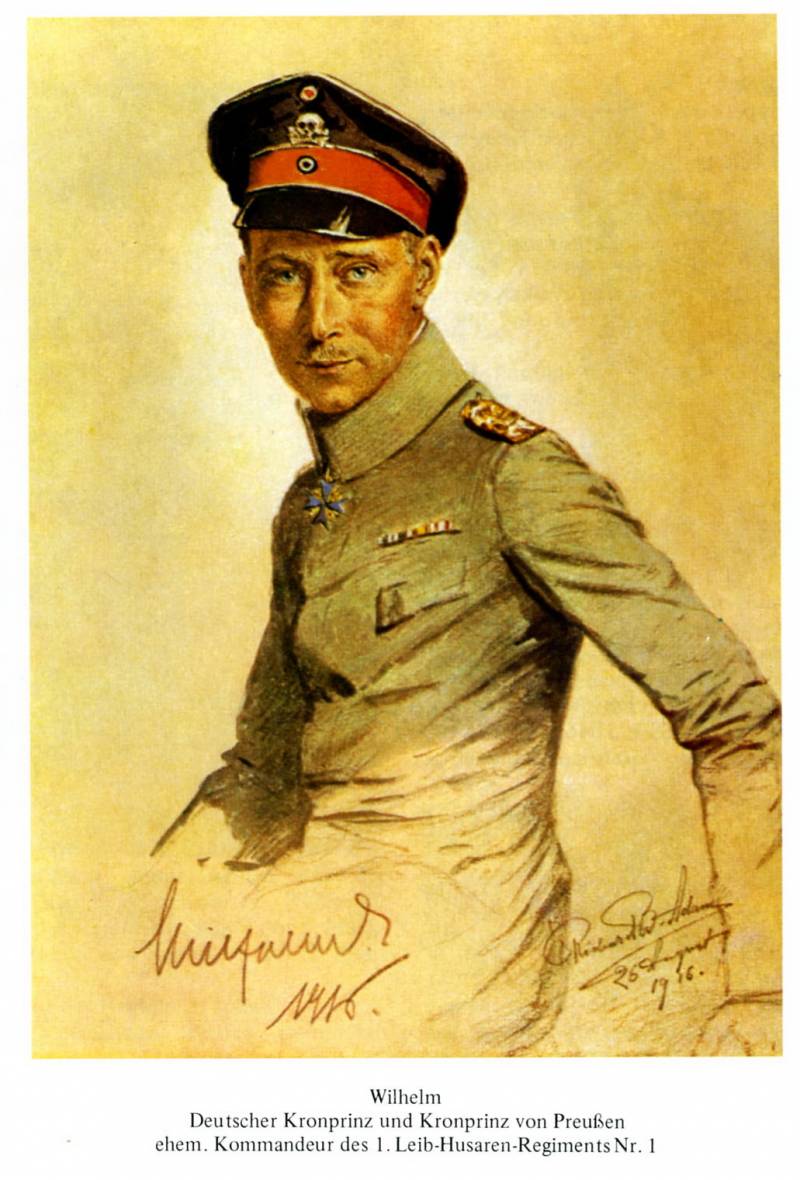
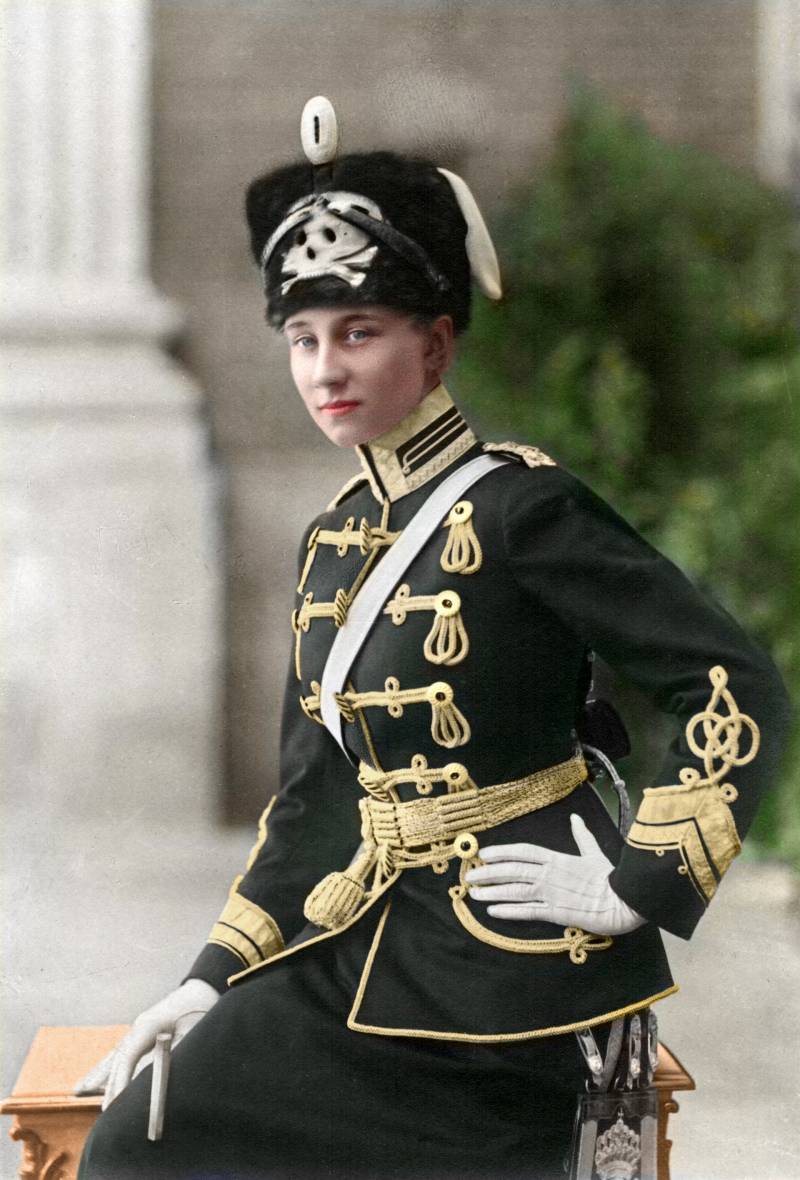
Information